Which Leaf Blower is the Best? Battery vs. Gas (and a Makita Leaf Blower Review)
This review of the Makita 18V Brushless Leaf Blower is sponsored by The Home Depot.
I never asked, “Which leaf blower is best?” I simply wanted a solution to the problem of too many leaves. It wasn’t until recently I also questioned “Battery vs. gas?” and “Which leaf blower can clear snow off of my car?” (Did you see that Facebook video, too?! Genius!)
We had just moved into our old 1973 house, a home swallowed up by waves of decaying, crunchy leaves, by which we felt overwhelmed to clean up. We had just moved from a 2-bedroom condo which only required a quick sweep of our private balcony. The rest of the groundskeeping was wrapped up in that hefty little condo fee we paid.
But moving into our own house, with budgets small and tight, we went to Home Depot and simply bought the first lawn tools we saw: a gas-powered lawnmower, followed by a gas-powered backpack blower.
(Why didn’t anything tell me about this unpleasant part of homeownership, doggonit?!)
Soon after I discovered battery-powered lawn tools that I flaunted around my yard as if I were part of a secret society of “environmental elites” who cared more for the environment than my gas-guzzling neighbors.
But what I soon learned is that there are no one-size-fits-all rules about electric vs gas-powered. It isn’t just “If you want to protect the environment, choose electric.” Or “If you want to choose the next generation of lawn tools, choose electric.” Or “Electric is where it’s at. Ditch gas!”
Choosing the right lawn tools wasn’t just a matter of gas vs electric, but rather:
- The amount of leaf clean-up you need to do.
- The size of your lawn.
- How many 18-volt batteries you already own.
- How much gasoline you have at your disposal.
Let me tell you how I came to this understanding recently.
I’m part of a program called The Home Depot ProSpective. It’s basically a program where The Home Depot and its exclusive brands will send products to bloggers and YouTubers such as myself to test them out, use them as part of our projects and everyday lives, and to post about them on our channels and blogs.
When this Makita 18V lithium-ion brushless blower arrived on my doorstep, I was super excited because, well, we get a ton of leaves due to our tree-lined neighborhood (thanks to county trees–ugh). I was curious to see how another brand would stack up to the other previous battery-operated lawn tools that I had been touting season after season.
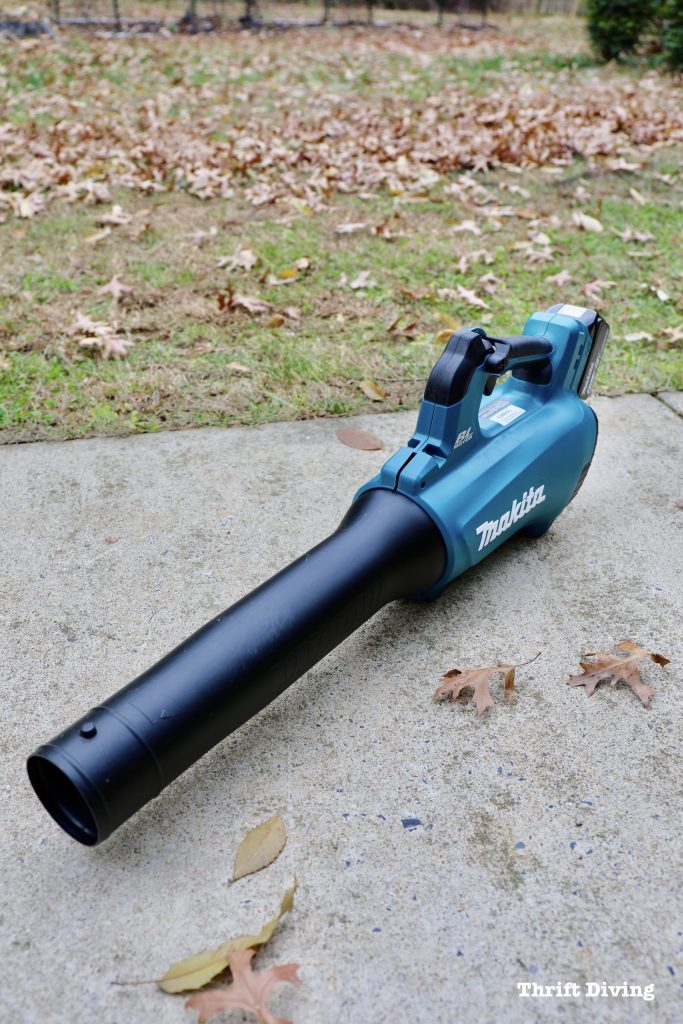
And while having a tree-lined street looks pretty and cozy, it wreaks havoc on our street day after day when fall rolls around. Guess whose house bears the brunt of it due to shifting winds and neighbors’ trees? Yep–this family.
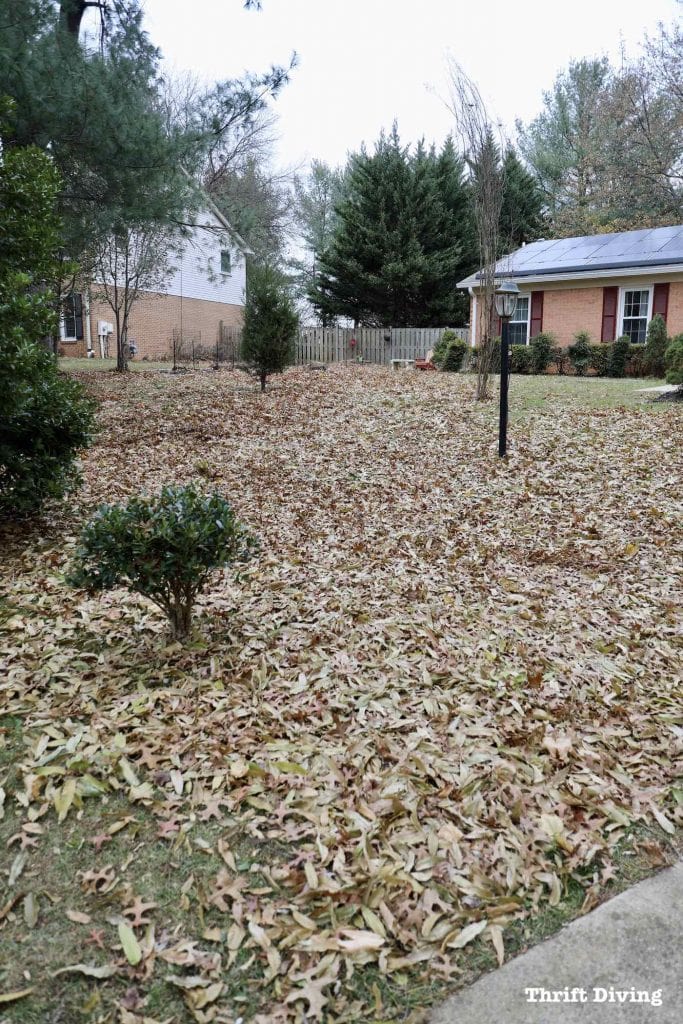
I joke that we bought the worst house in the neighborhood. And while that’s a joke (truthfully–they probably all had 1970’s wallpaper, too, so we weren’t really the worst house), there is some truth that we picked the worst house in terms of leaf dumpage. (Is that even a word–dumpage??).
While the other homes certainly get leaves, no house…I repeat….no house gets as many leaves as us.
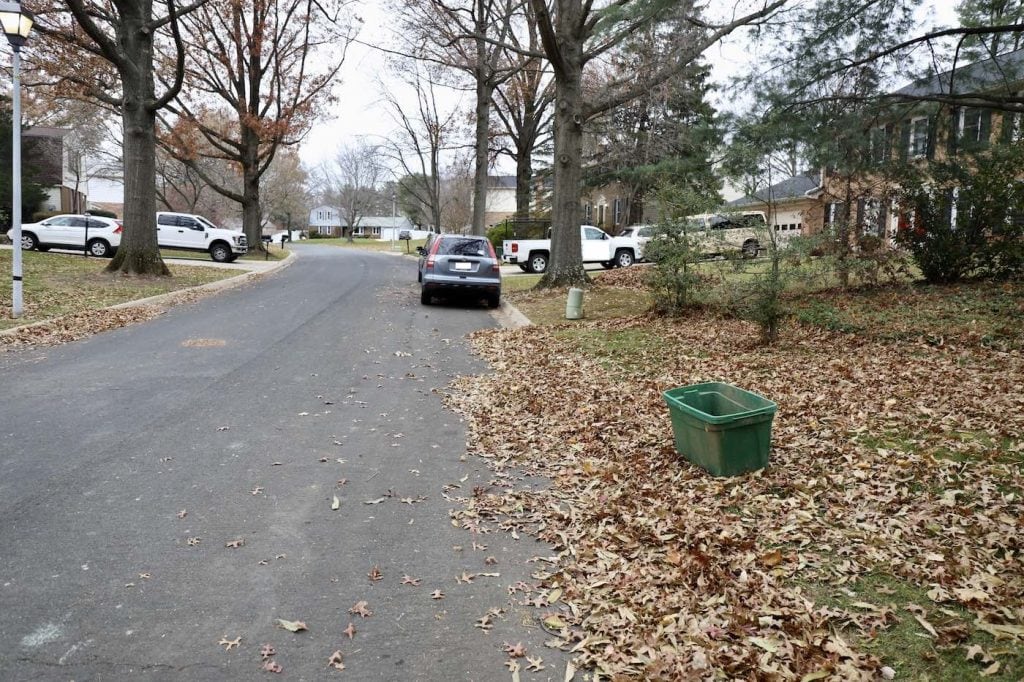
I was excited to try out the Makita 18V blower to see if it really had the power I thought it would have. Some people are deterred when they see batteries because they think it doesn’t have the power compared to gas-powered lawn tools. But I’ll share with you in a moment why that both isn’t….and is….the case.
Makita is a well-known and trusted brand of tools. I don’t own any other Makita tools so this was my first experience with the brand but, due to its quality reputation, I knew it would perform well.
Would it stack up to my other battery-powered lawn tools? I was about to find out.
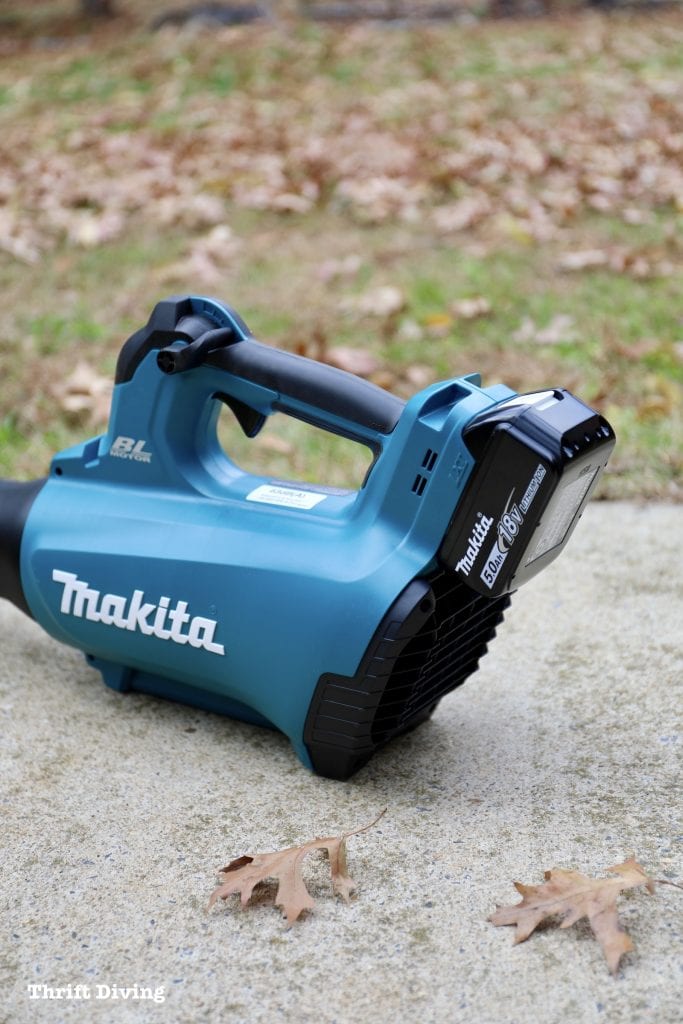
Product Descriptions Mean Nothing
When I look at a product description of a product, I’ll admit that, depending on the product, there are a lot of bulleted features that mean nothing to me until I actually get the tool in my hand and experience those features.
So I won’t spew off a lot of those bulleted items about this Makita (you can read about them on the Home Depot’s website); instead, I’ll share with you what I really liked about this blower, how it was different from other blowers I have used, why it ended up causing me to yearn for the power and longevity of gasoline, and if I would actually recommend it to you for your own yard.
4 Reasons Why the Makita 18V Leaf Blower Was Excellent
It sounds silly to think of a blower being “fun” but I actually enjoyed using this blower on the leaves! Here is why:
- It didn’t make my arm ache. While I’m no Arnold Schwarzenegger bodybuilder and could stand to do some arm curls, I’m also no weakling, either. In the past, using a leaf blower for any length of time would cause my arms to get tired and ache. But with the Makita blower, at only 6.5 lbs with the battery, I definitely noticed I didn’t feel fatigued after blowing. Other blowers can be 8 – 10 lbs. And while that’s not a lot, if you’ve got a big yard, and you’re shifting a 10-pound blower back and forth, from hand to hand, you may start to feel it. I didn’t experience that fatigue when using this one.
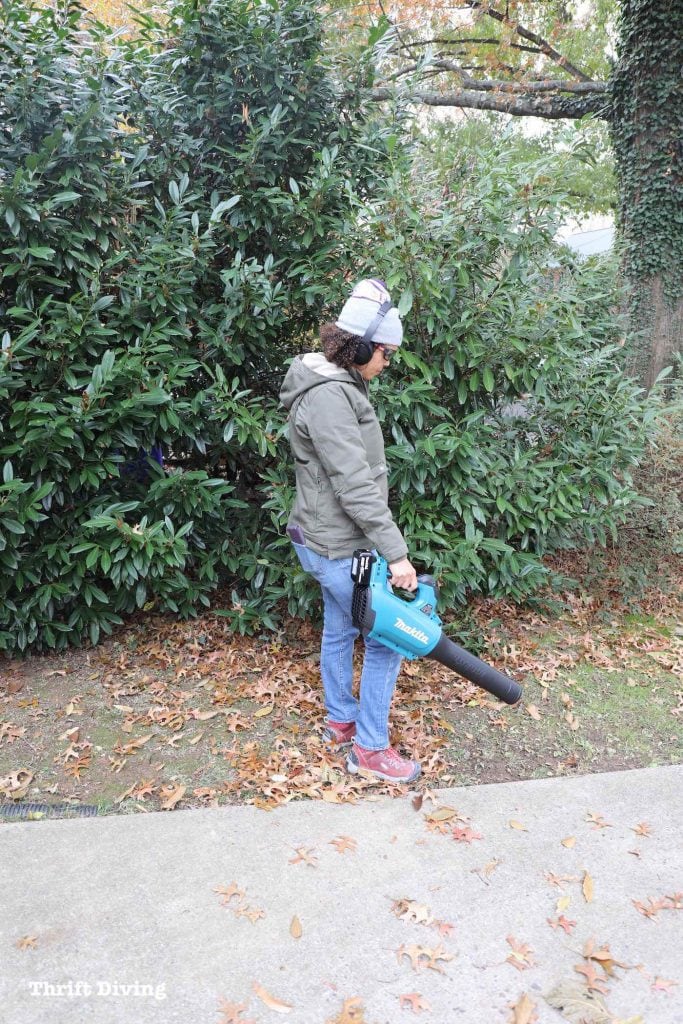
- It worked well even on wet leaves. Not that you would be out blowing leaves in the rain, but that’s exactly what I did to test how this blower would stand up to sopping wet leaves. Wet leaves are heavy and can stick to the ground like they’re pasted on with school glue. Surprisingly, the Makita blower gave me no trouble!
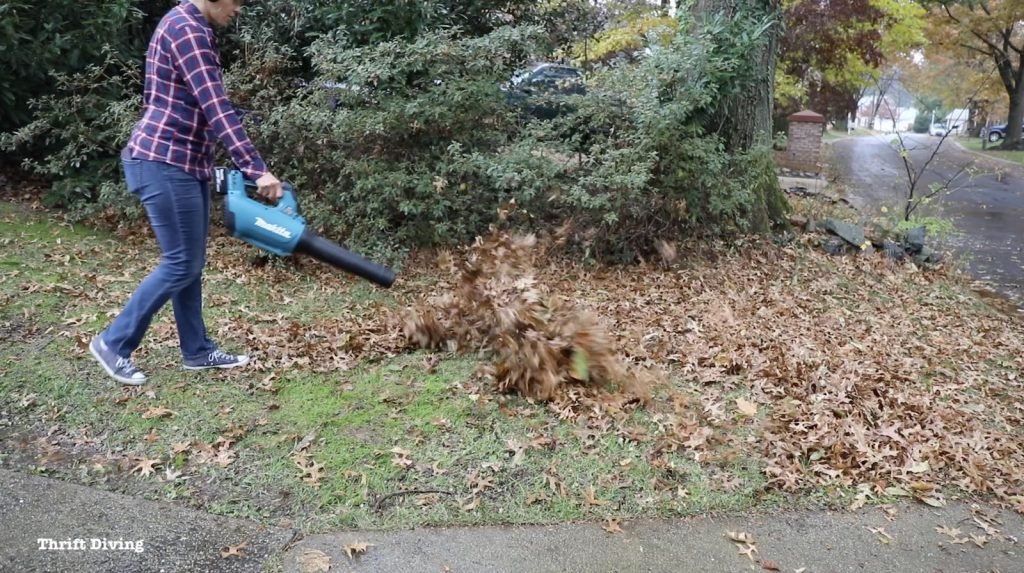
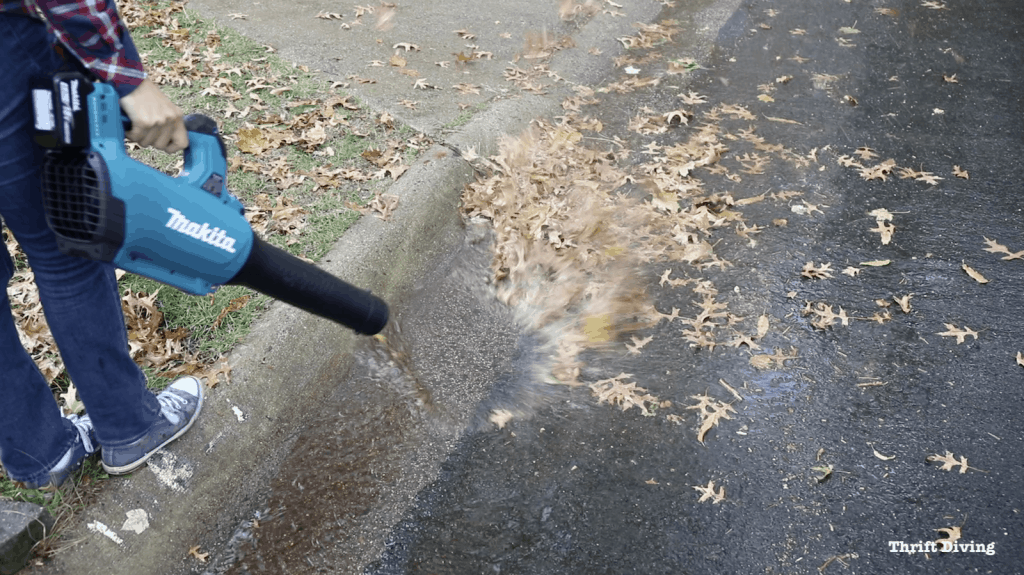
- It has “cruise control” so your finger doesn’t feel like it’s going to fall off. There is nothing worse than using a lawn tool that requires you to continuously grasp the trigger for power. Unfortunately, that has been my primary experience with other brands. But the Makita blower has a “cruise control” lever with variable speed that allows you to lock it into place at the speed you want and just go, saving you “finger energy” along the way. I loved this feature!
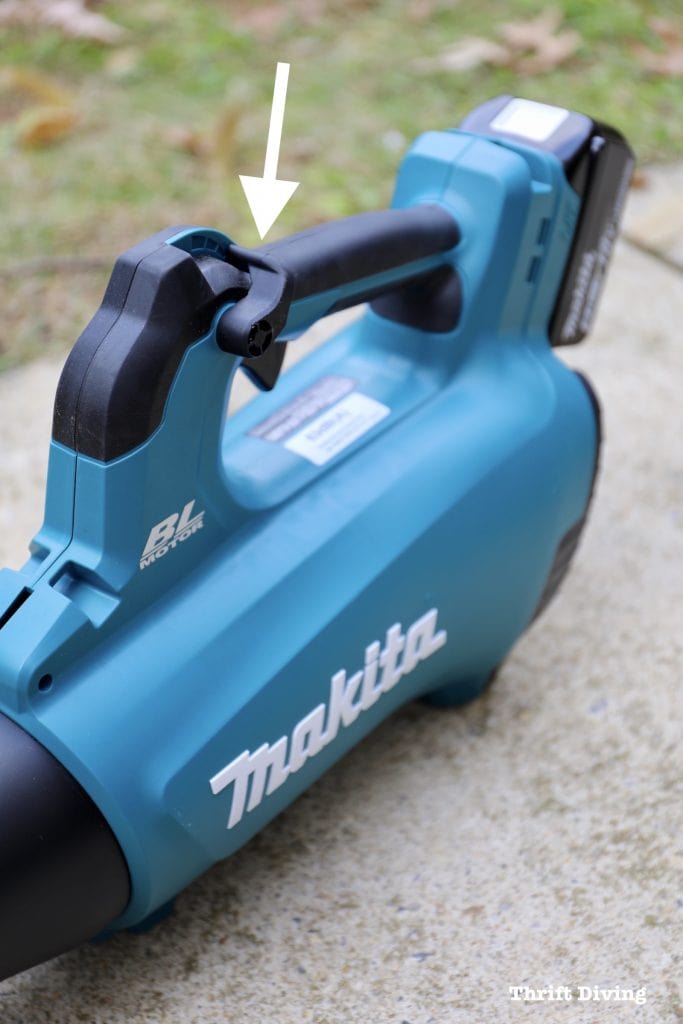
- It could push heavy piles of leaves forward very easily. Hands down, this blower has power. With the amount of leaves in my yard, blowing them often results in huge, heavy piles that need to be moved forward. With other brands, I’ve had to use two blowers to get that same power. With the Makita, however, I had no problems moving those heavy mounds of leaves. I felt like I was making progress quickly.
- It can blow snow off of your car. You may have been living under a rock if you didn’t see that viral video of someone cleaning off their car with a leaf blower! Why didn’t you and I think of that?? This Makita is so powerful that I am sure snow won’t be a problem. Of course, if you’ve got heaps of snow, heavy and wet, it may be challenging. But that powdery stuff would be no match for it. Sure beats turning the kitchen broom into a battered-looking toothbrush! HA!
But…The Battery Was Challenging at Times
On some days, there were few leaves and I found myself blowing through (excuse the pun) the task of yard clean-up fast. But, there were other days when the piles of leaves added up and, although it performed well, I couldn’t cover as much ground as quickly.
The challenge? The 5.0 Ah battery (which came with the blower) kept dying on me before I could complete the job.
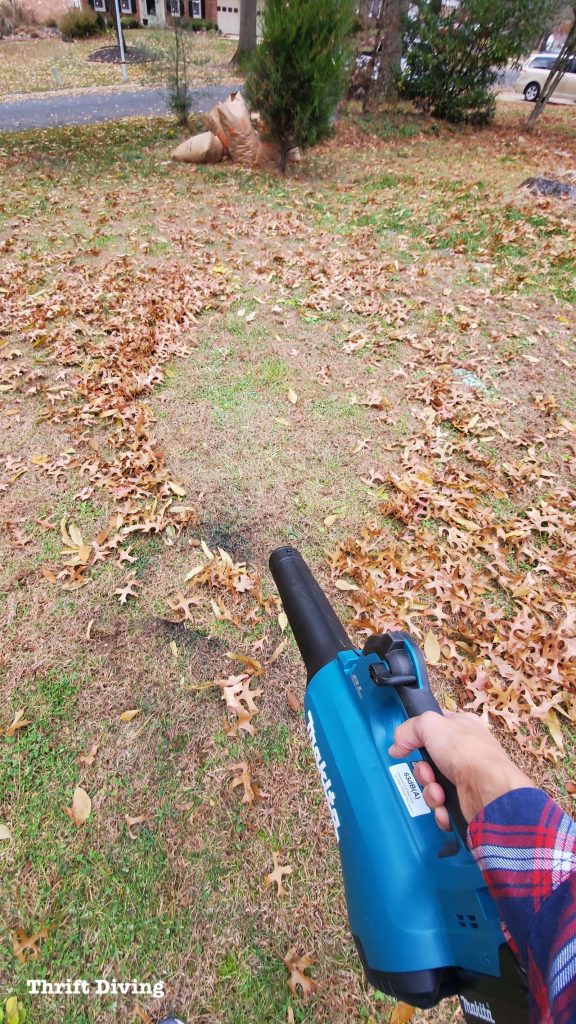
If you’re a user of battery-powered tools as I am, dead batteries are something you anticipate. It’s expected. Even brands will urge you to pick up extra batteries whenever you switch to battery-powered tools because they know that when you’re in the middle of a job, your goal is to get ‘er done.
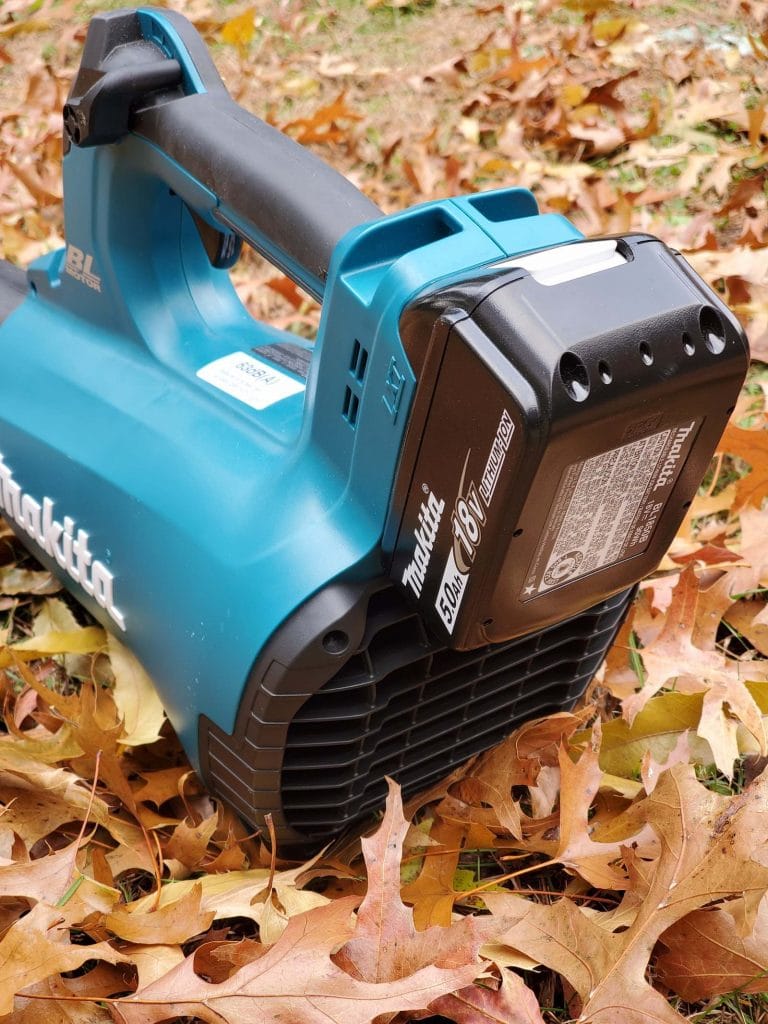
This is why for Black Friday I went to The Home Depot and picked up a 2-pack of 6.0 Ah Makita batteries, hoping that the additional power (the Makika comes with one 5.0 Ah battery) would allow me to finish the front yard clean up job.
I decided to time the continuous run-time at max power using a stopwatch to see how long the blower would run on both the 5.0 Ah battery and the 6.0 Ah battery. The Makita actually features a variable speed lever so if you need softer blowing for flower beds or other sensitive areas, you’ve got that option (not all leaf blowers offer this).
With the 5 Ah battery, I got a bit over 10 minutes, and with the 6 Ah battery, I timed just over 13 minutes of continuous run-time on full max.
What this meant was that if I wanted longer run times, I would have to:
- Lower the power using the variable speed level, while hopefully still getting the job done.
- Use the blower when it’s a lightweight yard clean-up and not a 2-feet deep mess of heavy leaves.
- Have multiple batteries fully charged and ready.
And, in fact, in another test, I did lower the power just a hair on the Makita blower and during a “light” clean-up (3 bags worth of leaves), I was able to complete the front yard (1/8th acre) in about 20 minutes.
The key, I learned, is that to get more run time, you’ll need to dial back the power. It will still do a pretty good job of cleaning up the leaves.
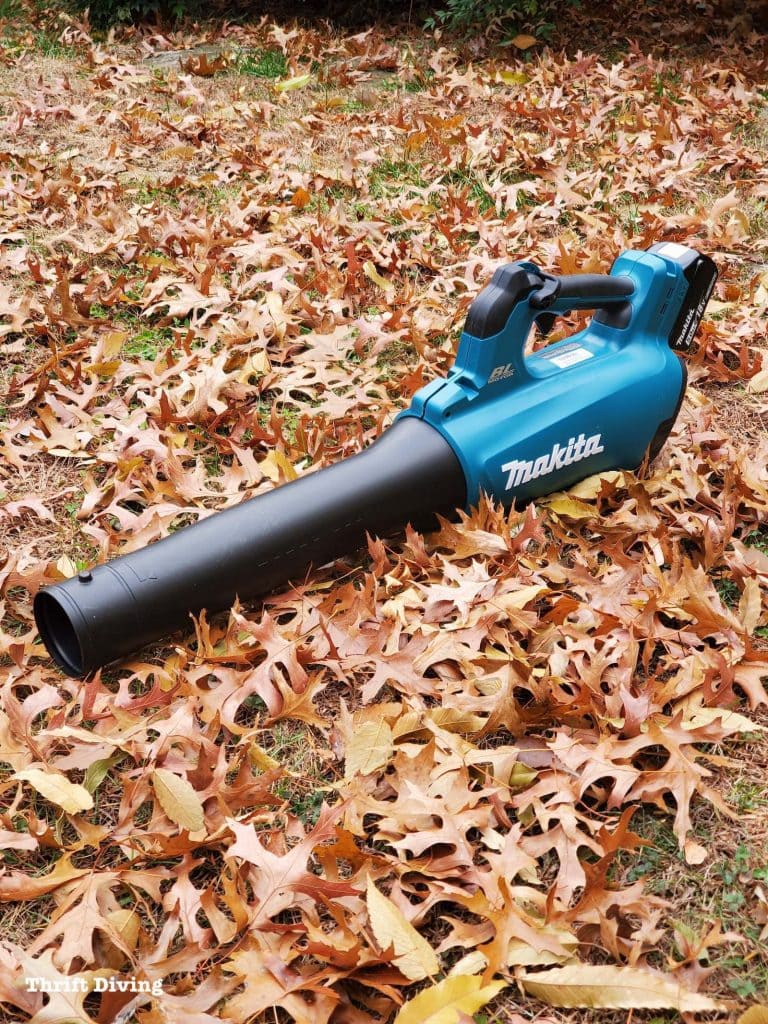
Are We Ready to Ditch Gas-Powered Lawn Tools, Then?
So it makes me question, although electric lawn tools work well, despite having to make some concessions to conserve and extend power, are we ready to totally ditch gas-powered lawn tools?
In my opinion, no, we aren’t ready. I am not ready. As much as it’s convenient to pop a battery in and get started right away (but knowing that I may not be able to finish the job when the batteries die), it’s frustrating when you have to stop in the middle of yard clean up.
But it also depends on the size of your lawn. If you’ve got 1/4 acre like me (front and back yard combined), I am beginning to understand that bigger clean-ups may need a full tank of gasoline to get the job done without stopping (unless, of course, you run out of gas….). However, when you’ve got a smaller yard or a lighter load of lightweight crunchy leaves, battery-powered (or plug-in lawn equipment) may be totally suitable.
So Do I Recommend the Makita 18V Leaf Blower?
I’ll admit that I loved this powerful light-weight blower! It doesn’t even compare to the other battery-powered lawn equipment I have used. It pushes the heaviest of piles (wet or dry), and when there are light loads of leaves, you can blast through 1/8+ acre yard using the 5 Ah battery (use the 6 Ah battery for more run-time) when it’s not cranked up on full-blast.
However, when there are bigger loads of leaves to round up (or greater acreage), you will need many batteries changes to complete the job. If you’re a Makita tools fan, you may have many batteries on hand since the battery work on the complete system of power tools and lawn tools) so this would be fine. But if you don’t own a lot of Makita batteries or chargers (and don’t want to invest the money into additional batteries and chargers), you might want to use a gas-powered leaf blower to get through a larger job.
Overall, the Makita 18V leaf blower is a solid leaf blower and you’ll notice its power upon the first pull of the lever. I thoroughly enjoy how powerful it is! It’s a joy to use and I actually look forward to using it (did I just admit that I enjoy yard clean-up…??). Just make sure that you keep those caveats in mind about battery run-time and the size of your lawn.

Download the 5 freebies!

Thrift Diving inspires women to decorate, improve, and maintain their home themselves...using paint, power tools, and thrift stores! Use these 5 printables, checklists, and ebooks to get started!

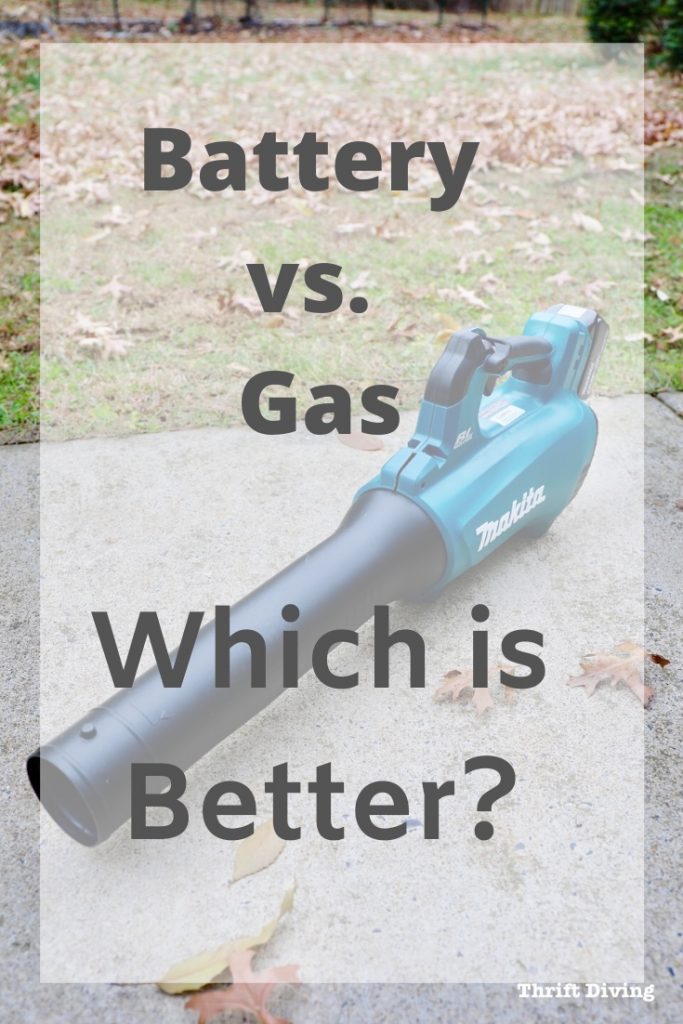
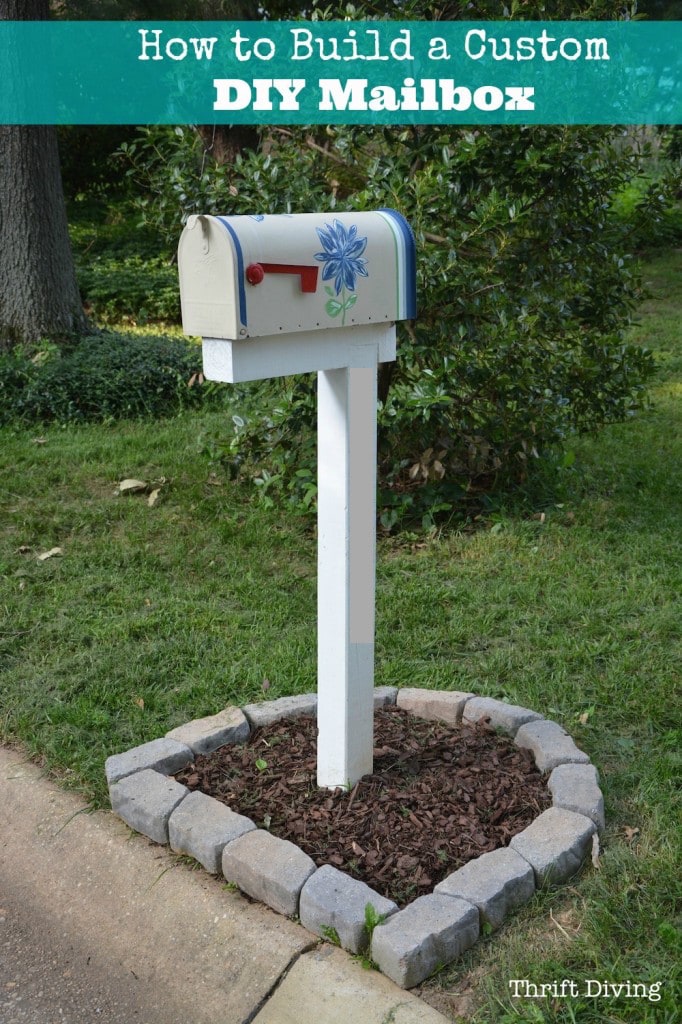

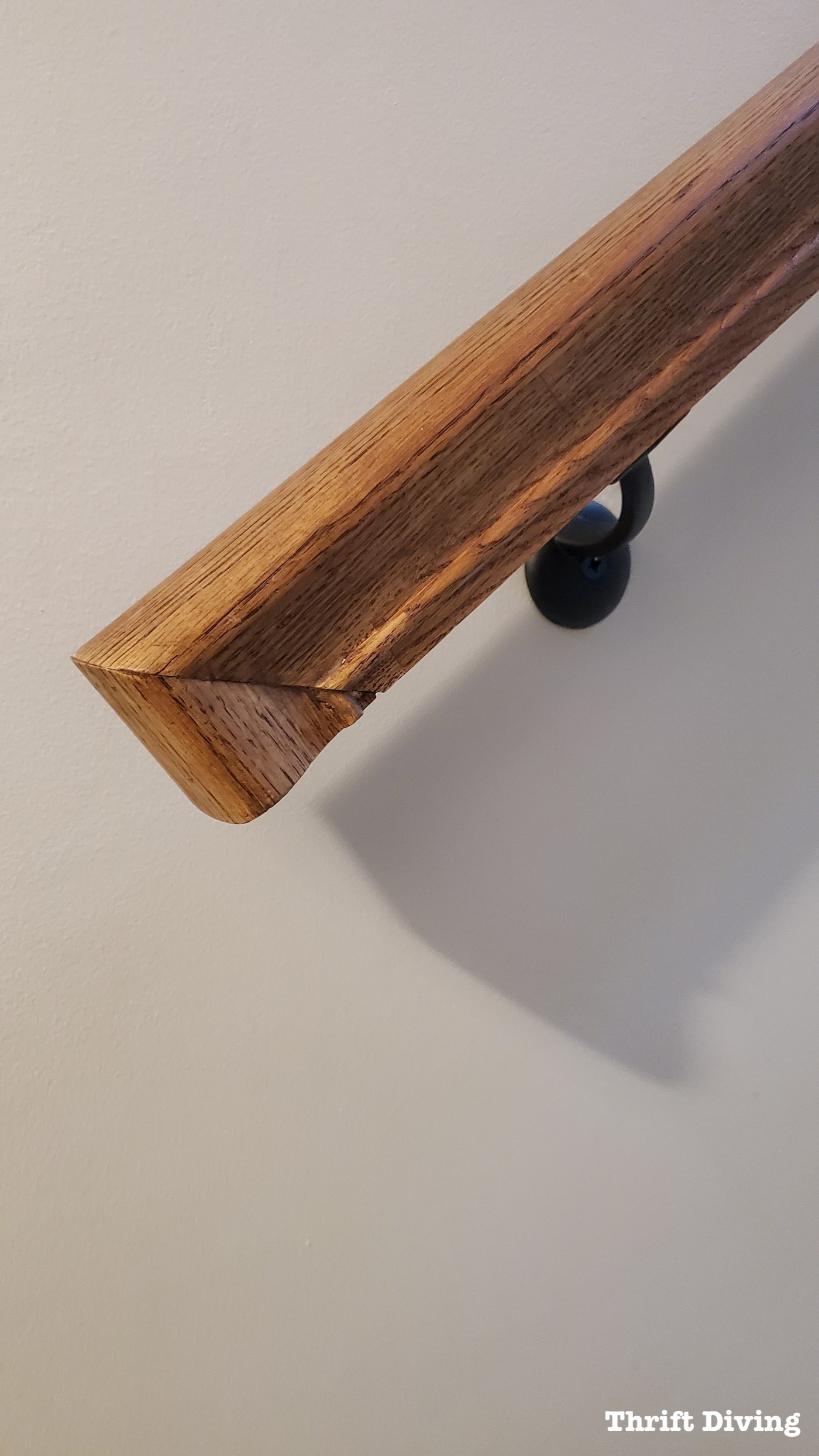

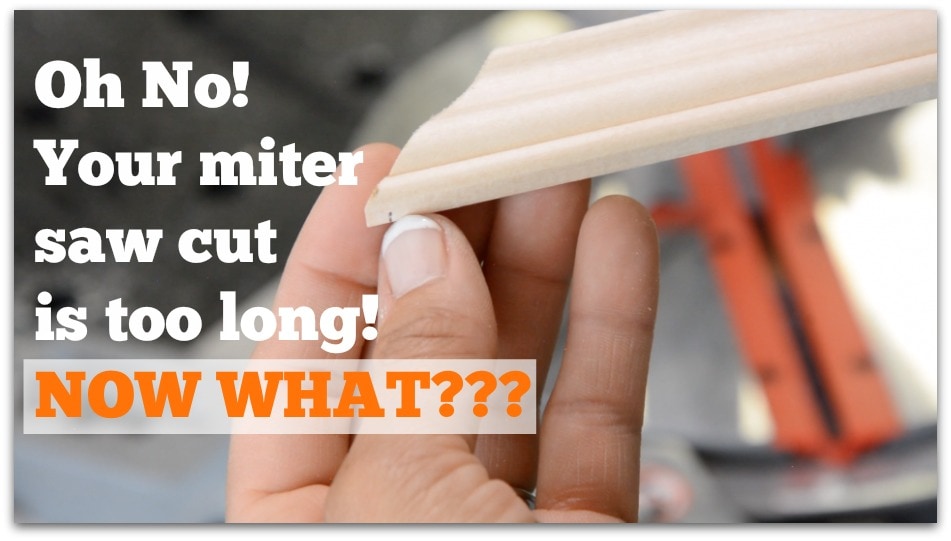

Nice review. I’ve been a part time lawn maintenance contractor for 25 years and have commercial gas equipment, but slowing the business down. So, for my home, I’m buying cordless because of convenience. 1. For now, I can leave my equipment on my trailer; sometimes I do my lawn on a different day than my accounts. 2. I don’t have worry about keeping mixed 2cyl fuel. 3. The cordless equipment is light and easy to operate.
It takes about 10 minutes for me to trim my lawn and about the same to 20 minutes to blow leaves on all but a few days. I have Makita cordless tools with extra batteries so adding the yard tools just makes since. I’d say most homeowners would fair just as well with cordless lawn equipment except for the mower. In addition most DIYers have cordless tools, so they just as well buy a system that allows them to use the same batteries and chargers.
Good points! I love gas for its longevity, but I love cordless for its ease of use for the reasons you mention. 🙂 Thanks for commenting!